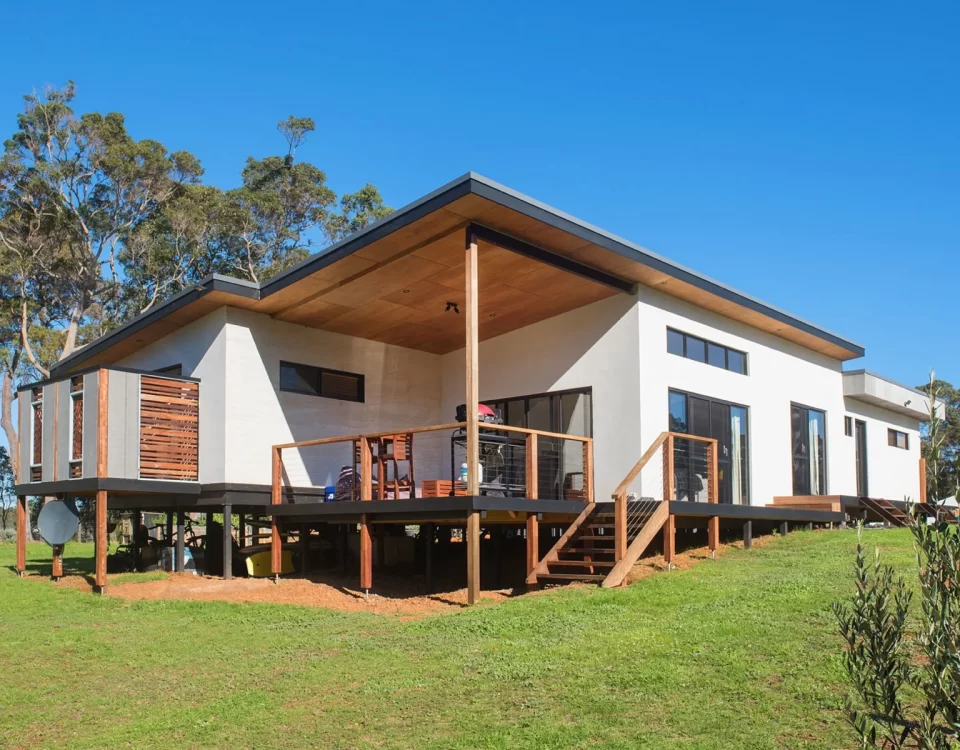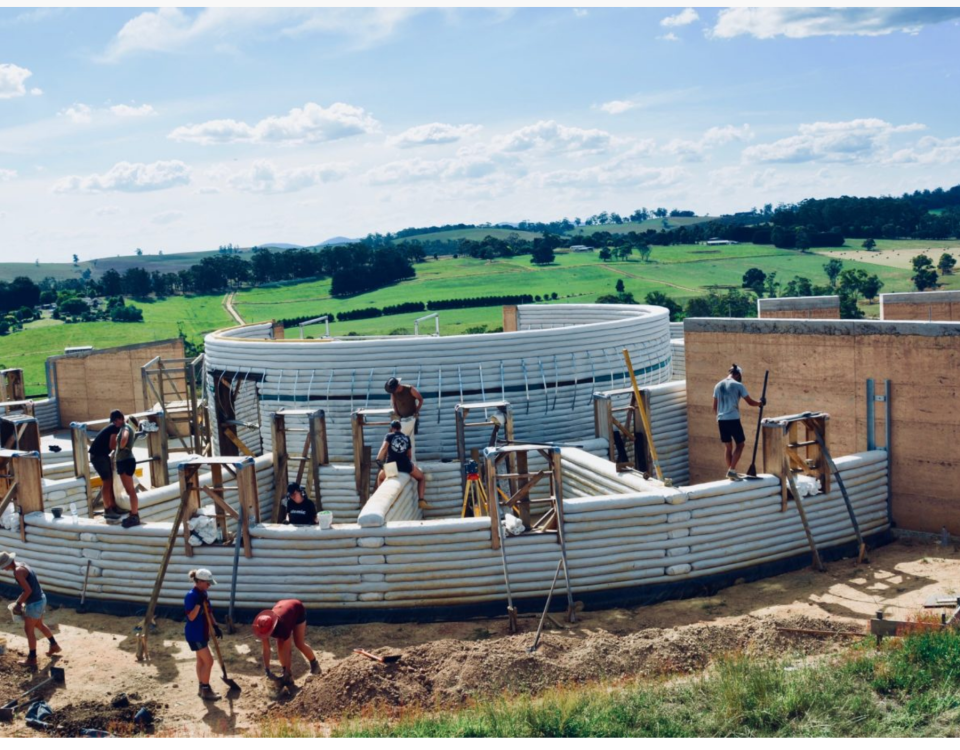
The origins of earth building
14/04/2023
How to find resources
14/04/2023Natural building is as old as time, but how do we learn to build homes when the traditions are fading and there’s no real Australian tradition?
Australia does have a long and proud history of earth building, dating back to the early settlers who were fond of building ‘wattle and daub’ as their way of establishing settlement. After they began using fired bricks, the interest in earth building did wane but was revived in the 1930s and 40s by some enterprising young bohemians who saw that they could find ways to revive European traditions and make it work in the unique Australian climate.
From 1934, at a site located 25 km from the centre of Melbourne in the green rolling hills of Eltham, Montsalvat became the nexus of Melbourne’s bohemian artist community. Those young and experimental artists wanted to pursue a life ‘free of materialism, oppression and prurience,’ said the charismatic founder Justus Jorgensen (1). Providing both the backdrop and an ideological basis for a community interested in the lifestyle and aesthetics of craftsmanship, Jorgensen revived the use of pisé de terre, adobe brick and local mudstone, practices not seen widely since the turn of the century.
Out of this creative movement emerged the young draftsman Alistair Knox who saw that he could help young families build their dream home at a time when there were no manufactured or imported materials to be found! Knox could see that those who started to move to Eltham had particular ideas and politics. Sensitive to the aesthetic and intellectual motivations of his comrades, Knox started designing homes that reflected both the values of their owners and the landscape on which they were being built. This was revolutionary for the late 1940s when Melbourne and much of Australia had begun its suburban expansion.
Out of this grew the tradition of ‘muddies’ that still exist, and form part of over 1700 known Knox buildings across the green wedge around Melbourne. Starting in the 1960s, Knox would hold a tour of his houses, and others built around the same time. You can join in this tour, held with much respect annually by the Eltham Mud Brick Association – that continues to this day. The Eltham Mudbrick Tour is returning Sunday, 21st May 2023 via a brand-new, virtual platform. You can see through the buildings, a long history of Australian experimentation and a yearning to understand this peculiar landscape, and how to build on it.
(1)Jenny Teichman, “Jorgensen of Montsalvat,” Quadrant 29, no. 6 (1985), 26.




